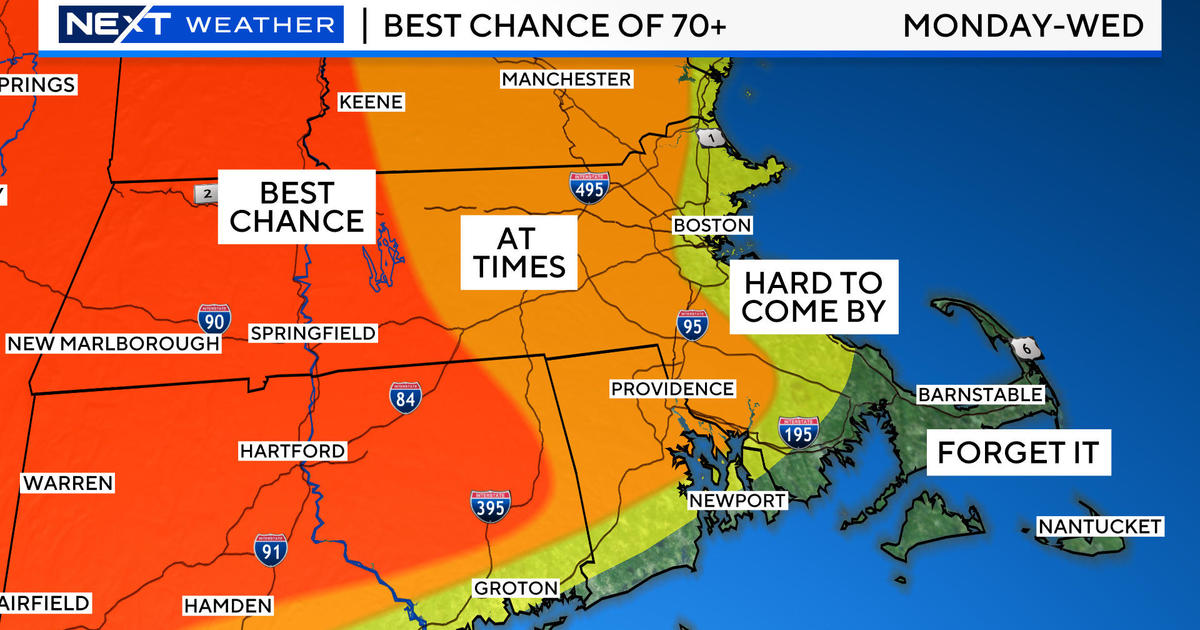Orange Line rides are now slower after MBTA's month-long shutdown
BOSTON - When the MBTA announced a 30-day Orange Line shutdown, it said its goal was "to help ensure travel on the MBTA is safe, accessible, smooth, and convenient" for customers on the T.
On the day it announced its reopening, September 19, the MBTA said it had met its goal "of eliminating six slow zones along the Orange Line, which creates faster and more reliable commutes for customers."
Viewers, commuters, and WBZ-TV staff wanted to know: was the Orange Line shutdown worth it? Did it in fact increase the speed and efficiency of riders' commutes through eliminated slow zones and nice, new trains?
The short answer: the jury's still out.
WBZ reporter Kristina Rex rode the Orange Line six times for an experiment: twice on the old Orange Line in August, twice on the shuttle bus route during the shutdown, and twice on the new Orange Line in late September and early October. Each day, she started between four and five in the afternoon, and rode from State Street outbound: either to Oak Grove or Forest Hills.
Here are the timed results of her rides:
1. State Street to Oak Grove on the old line: 20 minutes, 29 seconds
2. State Street to Forest Hills on the old line: 24 minutes, 44 seconds
3. State Street to Oak Grove on the shuttle bus: 1 hour, 2 minutes
4. State Street to Forest Hills on the shuttle bus: 58 minutes, 48 seconds
5. State Street to Oak Grove on the new line: 35 minutes, 2 seconds
6. State Street to Forest Hills on the new line: 27 minutes, 15 seconds
It's not a perfect science, but the rides on the new trains actually took longer than those on the old line. Riders report the same experience. "It's been okay," said Lisa Lemoi of Wakefield. She appreciates the new trains and thanked the workers for all they did, but told WBZ she was surprised by just how slow the ride was. "It's not the entire time," she explained. "But I could've driven faster" when the Orange Line first opened.
On the way to Forest Hills, Northeastern student Natalia Marroquin told WBZ she's been frustrated by the commute since the reopening. "I feel like it's not as effective as they said it was going to be," she explained. "Like we have nicer trains, but are they faster? Not really."
Natalia's specific complaint was about the wait times. She says she waits up to 15 minutes for trains regularly. WBZ asked the MBTA about this, and they said they are currently running the Orange Line at about 75% of the capacity of this time last year, due to a staffing shortage of dispatchers and related safety mandate by the Federal Transit Administration. "The T has been working hard to recruit, hire and train more dispatchers, but until there is an adequate number available, service levels cannot be increased," MBTA Spokesperson Joe Pesaturo explained. "With safety the leading priority, service can only be increased after an adequate number of dispatchers are staffing the control center."
What else could explain the slower ride? Well, slow zones (there were six on the old Orange Line) have not actually been completely eliminated, despite the MBTA's announcement that it had "successfully eliminated" them.
The MBTA had initially kept slow zones in place to allow the new trains to "settle" on the new tracks for one week as planned, but have decided to keep some slow zones north of State Street for a bit longer. In a statement, the T said that "teams determined that with crews already in place, they could take advantage of the accessibility to start work on additional lower priority projects that would need to be addressed at a later date, now."
So, in essence, slow zones will stay in place between North Station and Assembly Square as crews continue to perform extra - additional - work on the line. There is no estimated end date for this work.
Lastly, WBZ noticed on its several rides that at many stations, the doors took minutes to shut. The highly sensitive doors would open and close, then open again as someone attempted to make it onto the train, or another person's backpack came too close to the sensor.
The doors are designed to close in fewer than 3 seconds, according to the MBTA. If they do not close quickly, it could be for several reasons: a train operator was instructed to stay at the station momentarily and is keeping the doors open, or the train operator is using his or her discretion, making sure that everyone is clear of every single door in the six-car train, according to the MBTA.
All in all, while safety improvements were successful and the Orange Line did reopen on time, riders are frustrated that aside from new trains, their commute has not gotten any faster.
"The MBTA understands its riders' frustration with speed restrictions, but safety and maintenance must take priority," the T said in a statement to WBZ. "The MBTA appreciates the ongoing patience of its riders, and looks forward to providing the faster, safer, and more reliable service they deserve."




